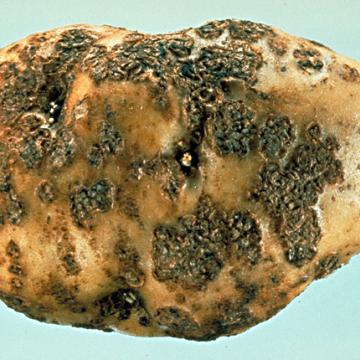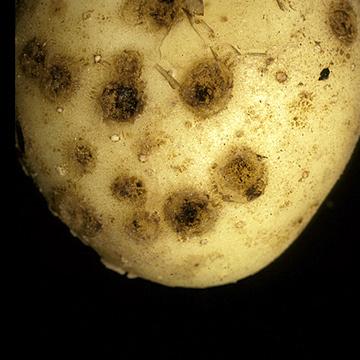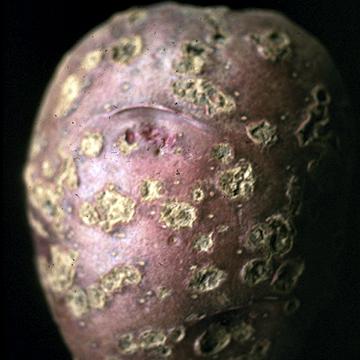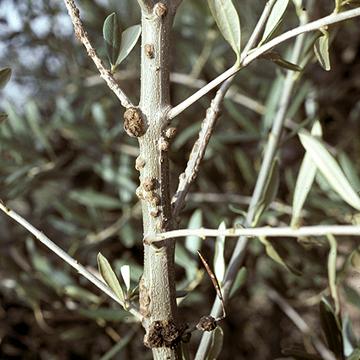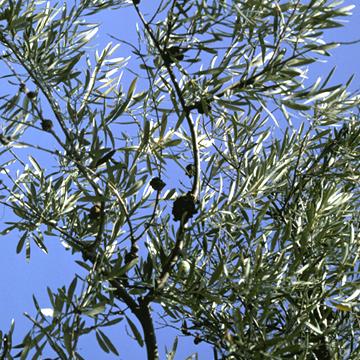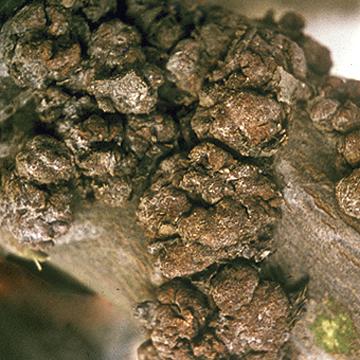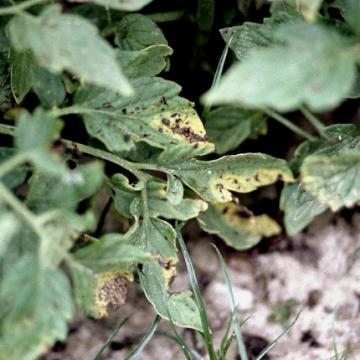DISEASE: Common scab (Potato scab)
HOST: Potato
Symptoms of common scab vary depending upon the cultivar. The lesions can be shallow or deep, erumpent and corky, and vary in color.
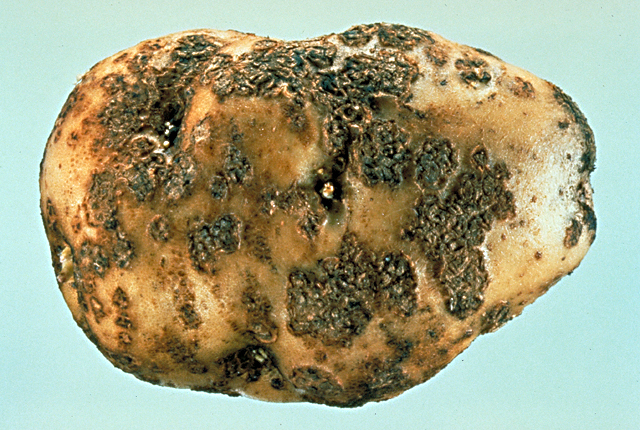
Common scab (Potato scab) | Potato
DISEASE: Common scab (Potato scab)
HOST: Potato (Solanum tuberosum)
PATHOGEN: Streptomyces scabiei
PATHOGEN SYNONYM: Streptomyces scabies
SOURCE: A. Secor
DISEASE: Common scab (Potato scab)
HOST: Potato
White-skinned tuber with sunken and superficial scab lesions.
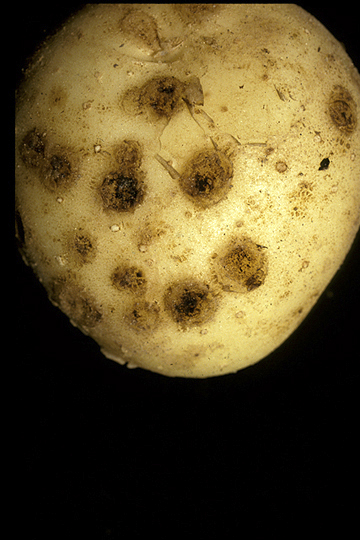
Common scab (Potato scab) | Potato
DISEASE: Common scab (Potato scab)
HOST: Potato (Solanum tuberosum)
PATHOGEN: Streptomyces scabiei
PATHOGEN SYNONYM: Streptomyces scabies
SOURCE: S. Thomson
DISEASE: Common scab (Potato scab)
HOST: Potato
Red-skinned tuber with lesions that usually penetrate less than 1 mm.

Common scab (Potato scab) | Potato
DISEASE: Common scab (Potato scab)
HOST: Potato (Solanum tuberosum)
PATHOGEN: Streptomyces scabiei
PATHOGEN SYNONYM: Streptomyces scabies
SOURCE: S. Thomson
DISEASE: Olive knot
HOST: Olive
Multiple infections of young stems. The bacterium invades vascular tissues during certain times of the year and may be isolated from branches that appear healthy.
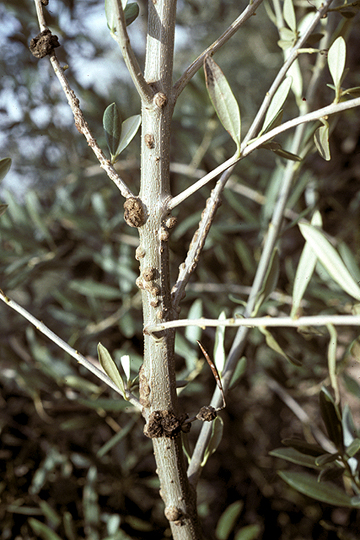
Olive knot | Olive
DISEASE: Olive knot
HOST: Olive (Olea europaea)
PATHOGEN: Pseudomonas savastanoi pv. savastanoi
SOURCE: M. Schroth
DISEASE: Olive knot
HOST: Olive
Tree with knots/galls on branches along with twig dieback, which is associated with knots. Fusarium and Diplodia spp. infect through knots and are thought to be main reason for dieback.
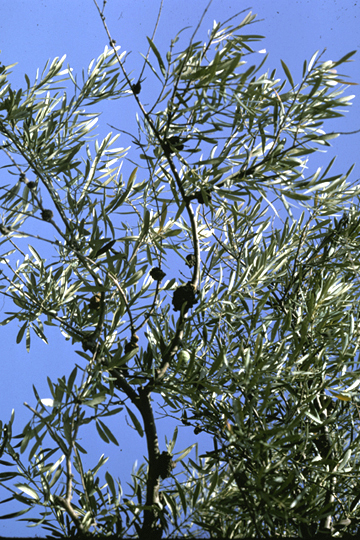
Olive knot | Olive
DISEASE: Olive knot
HOST: Olive (Olea europaea)
PATHOGEN: Pseudomonas savastanoi pv. savastanoi
SOURCE: M. Schroth
DISEASE: Olive knot
HOST: Olive
Multiple infections on olive branch. Knots at this stage begin to die from the outside in and are infected by several fungi.

Olive knot | Olive
DISEASE: Olive knot
HOST: Olive (Olea europaea)
PATHOGEN: Pseudomonas savastanoi pv. savastanoi
SOURCE: M. Schroth
DISEASE: Syringae leaf spot
HOST: Tomato
Leaves with brown necrotic lesions and chlorotic margins. Symptoms vary greatly among cultivars. Some have black or brown lesions with bright yellow, chlorotic areas and others do not have yellowing.

Syringae leaf spot | Tomato
DISEASE: Syringae leaf spot
HOST: Tomato (Lycopersicon esculentum)
PATHOGEN: Pseudomonas syringae pv. syringae
SOURCE: R. Gitaitis


